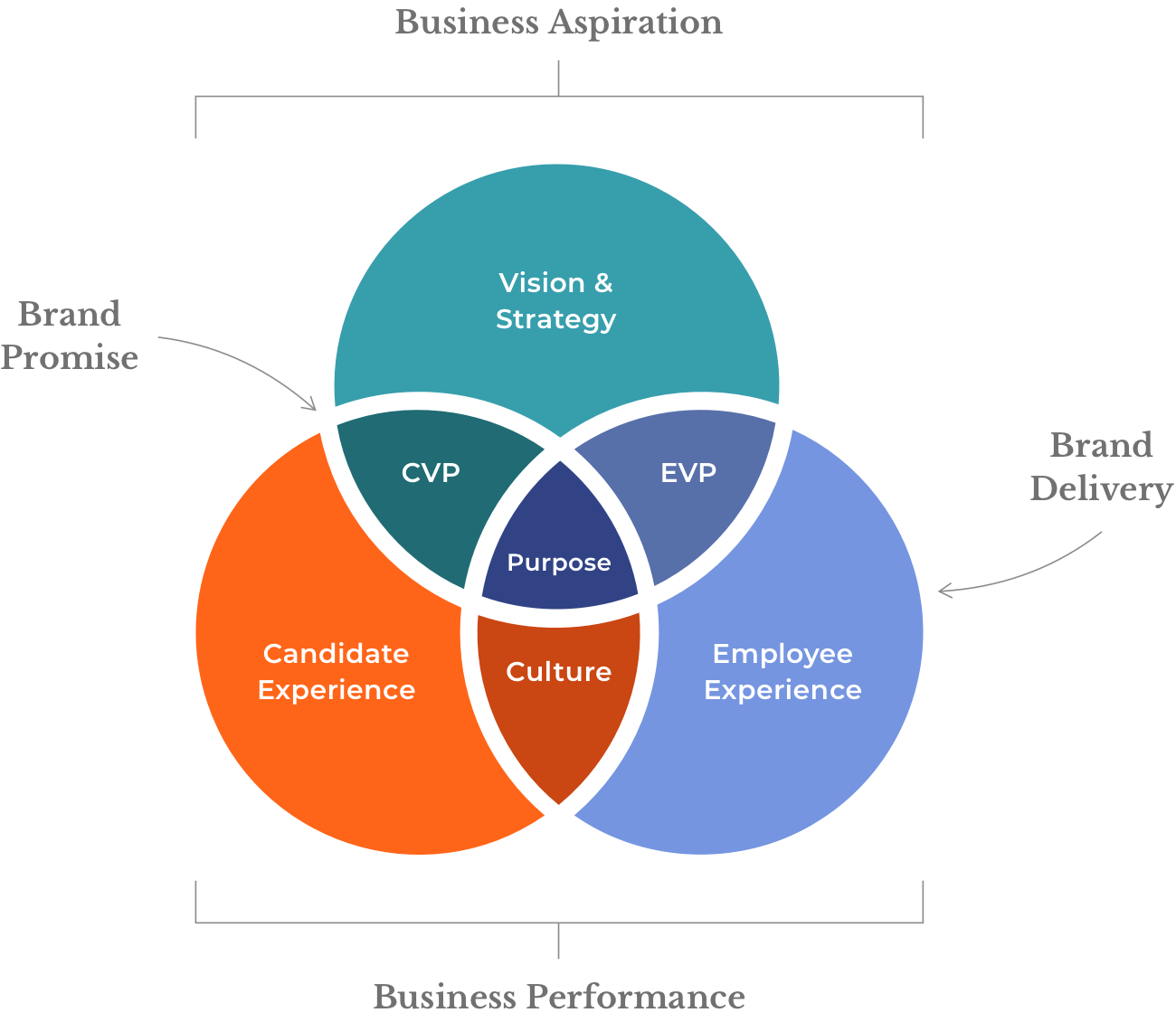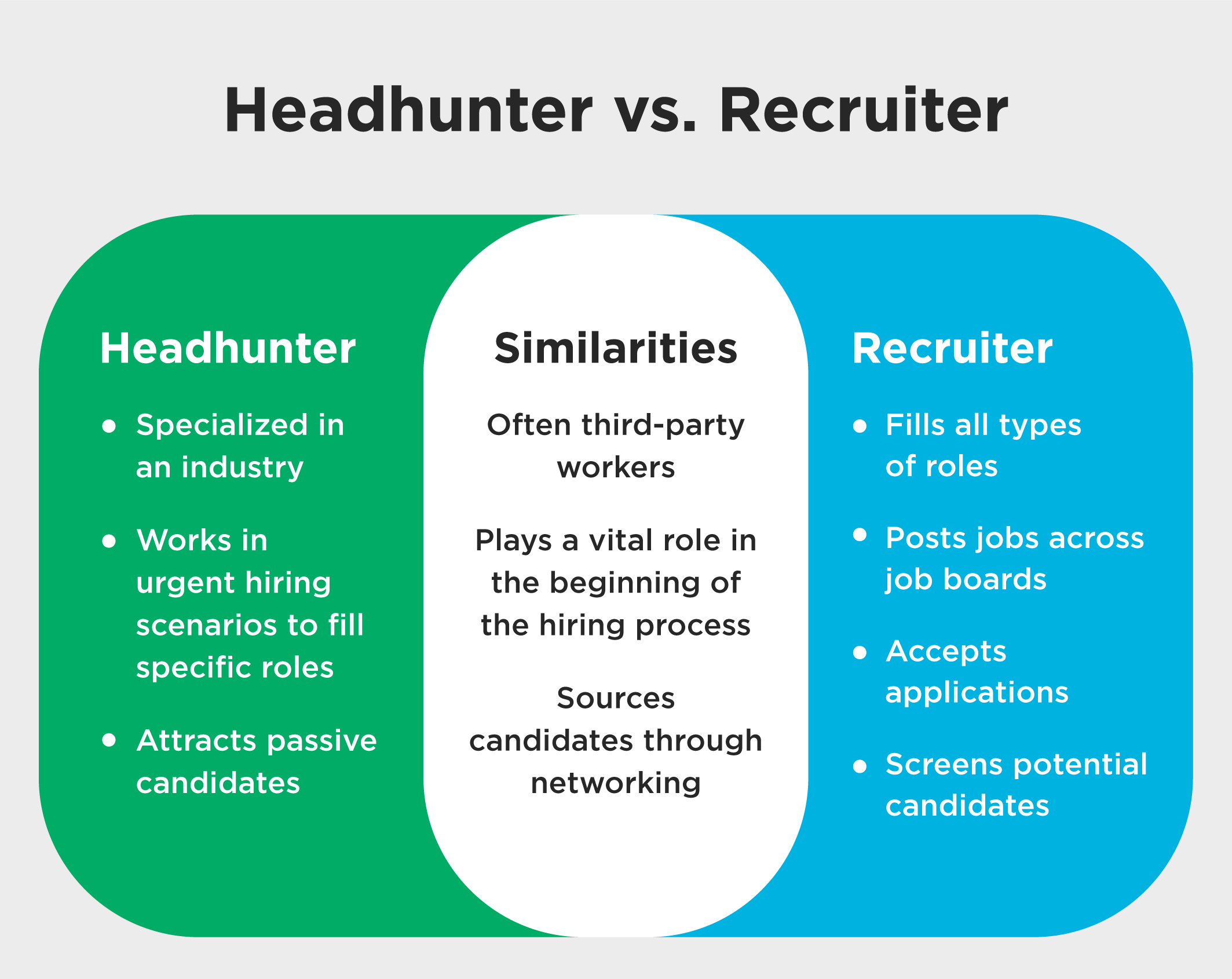Nailing talent acquisition is your key to business success. To accomplish this mission, companies employ various strategies and techniques, including talent marketing, talent mining, and headhunting. Each of these approaches serves a specific role in attracting the best-qualified candidates for your distributed teams. Explore the differences between these three methodologies and how they contribute to your talent acquisition strategy.
Pillars of a Lean Talent Acquisition Strategy
Understanding the foundations of talent acquisition is vital for success. It involves finding, attracting, hiring, growing, and retaining top talents within your company. To build a robust talent acquisition strategy for hiring software developers, consider these four pillars:
- Role Management: Clearly define and align roles for an organized team.
- Competencies: Identify and nurture key skills your team needs.
- Goal Tracking and Alignment: Ensure every team member’s goals align with business objectives.
- Tools for Employee Engagement: Implement tools that keep your team motivated and engaged.
3 Tips on Choosing the Right Talent Acquisition Strategy for Your Company Stage
From the stealthy days of Proof of Concept (POC) to the mature post-scaling phase, each stage requires a tailored strategy. Here are nuances on how to hire software engineers, along with tips to meet you where you’re at.
Stealth Mode
Goal: Proof of Concept (POC)
Context
In the initial stages, software companies are, forming a core team with limited resources and an uncertain future. Recruit versatile all-stars from your personal network, emphasizing the foundation for future growth.
Talent Acquisition Tips
- Prioritize hiring versatile talents adaptable to evolving needs.
- Seek individuals passionate about the project’s vision.
- Build a small, agile engineering team focused on experimentation.
Early Stage
Goal: Minimum Viable Product (MVP)
Context
At this stage, build a robust team for product development, marketing, and customer engagement. Prioritize skilled specialists aligned with the company’s vision, contributing to refining product ideas.
Talent Acquisition Tips
- Define core roles essential for MVP development.
- Look for team players willing to take on multiple responsibilities.
- Emphasize cultural fit to maintain a cohesive early team.
Scale Up
Goal: Product Market Fit (PMF)
Context
Scaling poses challenges in managing increased workloads and diverse tasks, while preserving company culture amid rapid expansion. Choose a blend of experienced hires and junior staff under mentorship to manage spending and groom future leaders.
Talent Acquisition Tips
- Expand the team strategically based on validated market needs.
- Prioritize hiring specialists to enhance product features.
- Build a recruitment brand to attract top talent.
Growth and Optimization
Goal: Expansion Beyond PMF
Context
In this stage, balancing innovation with structured processes is crucial. Prioritize individuals with a proven track record in optimizing processes and implementing efficient workflows, seeking candidates who contribute to both innovation and operational excellence.
Talent Acquisition Tips
- Implement scalable hiring processes for volume.
- Foster a culture that accommodates diverse talents.
- Leverage data-driven tools for efficient recruitment.
Mature Stage
Goal: Grow Market Share
Context
Here, the company must sustain momentum and innovation while potentially entering new markets or broadening its product portfolio. A strategic talent acquisition approach involves seeking leaders with a vision for driving innovation and navigating the complexities of a mature organization. Emphasize diversity and inclusion to bring varied perspectives, fueling continued growth.
Talent Acquisition Tips
- Focus on retaining key talents amidst growth.
- Cultivate a culture that attracts experienced professionals.
- Implement mentorship programs for knowledge transfer.
How to Craft Your Talent Acquisition Strategy

Building a successful talent acquisition strategy isn’t complicated, but it deserves dedicated attention. Photo by Windows
Building a successful talent acquisition strategy isn’t complicated, but it deserves dedicated attention. So much so, that IBM recommends looking at eight strategic steps:
- Develop a Strong Employer Brand: Make your company an attractive destination for top talent.
- Assess Current and Future Needs: Understand what skills your team needs now and in the future.
- Leverage Targeted Sourcing: Don’t just cast a wide net; aim for specific talent pools.
- Create an Effective Screening Process: Streamline your hiring process for efficiency and precision.
- Improve the Candidate Experience: A positive experience attracts the best; make your process candidate-friendly.
- Leverage Data and Analytics: Use insights for informed decision-making throughout the talent journey.
- Employ Useful Technologies: Embrace tech that enhances your recruitment process.
- Incorporate Diversity and Inclusion: Build a team that reflects diverse perspectives and backgrounds.
Now, it’s time to equip you to build a high-performing team that propels your business forward. Imagine a team that not only has the right skills but is also on the same mission as you, boosting your ROI. Let’s break down three approaches to make this happen.
Approach 1 — Talent Marketing: Crafting an Alluring Employer Brand
Talent marketing aims to make your workplace highly desirable, attracting top talent eager to contribute value to your company. Recruitment marketing, a subset of talent acquisition, highlights the employer brand, culture, and opportunities for hiring in LatAm or other regions.

Talent Marketing is an amalgamation of culture, strategy, assets and intentional actions. Image source: HCCR
Talent Marketing Pillars to Apply on Job Postings and Beyond
3 Real-life Employer Branding Examples
To inspire your talent marketing strategy, let’s explore real-life examples from successful software companies:
Renowned for its innovative and inclusive work culture, Google leverages its brand to attract top-notch talent. Their employer branding emphasizes creativity, diversity, and a dynamic work environment — with a lot of social proof for convincing.
Salesforce
Salesforce places a strong emphasis on its core values, including trust, innovation, and equality. Through effective talent marketing, showcase credentials and awards that endorse the company’s commitment to employee well-being, growth, and community engagement.
Atlassian
Known for its unique work culture, Atlassian highlights values like openness and collaboration. Their employer branding focuses on empowering employees to unleash their full potential while contributing to meaningful projects, including ESG initiatives (Environmental, Social and Governance).
These real-life examples demonstrate how impactful talent marketing shapes a compelling employer brand, attracting top talent to actively seek and join your company. Does your HR and Marketing team provide such initiatives?
Collaboration Across Teams Can Make or Break Talent Marketing
Employer branding is a team sport. Cross-team collaboration ensures an efficient talent acquisition process aligned with the company’s mission, leading to the recruitment of top-tier professionals in the software industry.
- Founders & C-Suite define the company’s mission, values, and long-term vision. Align these aspects with recruitment marketing strategies to attract candidates who resonate with the firm’s ethos.
- Marketing Teams craft and disseminate compelling narratives about the company’s culture, values, and unique selling points. Leverage various channels, including social media and company websites, to maximize reach.
- People Operations develop and execute talent acquisition strategies, ensuring a seamless candidate experience. Foster an inclusive and diverse workplace culture that resonates with potential candidates.
- Software Teams collaborate on showcasing the company’s technological prowess, innovation, and exciting projects. Illustrate how software engineers play a crucial role in shaping the company’s success.
- Product, Design, and Engineering Professionals individually act as brand ambassadors, sharing their experiences and insights. Their involvement in recruitment marketing adds authenticity and credibility to the employer brand.
Establish an environment where top talent naturally aspires to work, enhancing your talent acquisition efforts. You know you’ve hit the mark when you’ve enticed top talent to actively seek out your company.
Approach 2 — Talent Mining: Unearthing Hidden Talent Gems

Talent mining is a proactive method to identify potential candidates, saving you time and moneyby leveraging your organization’s database and external sources.
Photo by Erwi.
Talent mining is a proactive method to identify potential candidates, saving you time and moneyby leveraging your organization’s database and external sources. It involves two approaches: data mining and profile mining. While both entail analyzing information for valuable insights, data mining and profile mining differ in focus and scope within talent acquisition.
Efficient Data Mining in Recruiting: Unlocking Targeted Talent Acquisition
Data mining in recruiting is comparable to detective work, extracting valuable insights from resumes, LinkedIn profiles, and professional data. This method enables talent acquisition teams to precisely analyze and target individuals, ensuring a strategic and data-driven approach to recruiting nearshore software engineers.
Definition
- Focus: Data mining in recruiting involves the analysis of various datasets, and therefore encompasses a broader scope.
- Objective: The goal is to extract insights and patterns from diverse sources, including resumes, job applications, social media, and other relevant data, to inform strategic decision-making in recruitment.
- Tools: Data mining tools may include advanced analytics software, machine learning algorithms, and databases to analyze large volumes of information.
Benefits of Data Mining in Recruiting
- Time Efficiency: Streamline the screening process by focusing on candidates with profiles matching the organization’s requirements.
- Cost Savings: Targeted recruitment reduces costs associated with broad-scale hiring efforts.
- Precision in Selection: Improve the chances of selecting candidates who possess the necessary skills and qualifications.
To-dos:
Profile Mining: Targeting Specific Skills and Expertise for Effective Talent Acquisition
Profile mining targets specific skills and expertise. This method proves especially valuable for roles requiring specialized knowledge, enabling organizations to tap into internal resources and discover hidden talent gems.
Definition
- Focus: Profile mining specifically concentrates on the analysis of individual profiles, typically, those of potential candidates or professionals within a specific industry.
- Objective: The primary goal of profile mining is to identify individuals with specific skills, experiences, or credentials that align with the requirements of a particular role.
- Tools: Profile mining may involve using specialized platforms and tools designed to analyze individual profiles on professional networking sites like LinkedIn.
Benefits of Profile Mining
- Skill-Specific Recruitment: Tailor recruitment efforts to match the precise skills needed for a role.
- Access to Hidden Talent: Discover individuals with specialized skills who may not be actively job hunting.
- Strategic Workforce Planning: Build a team with diverse skill sets aligned with organizational goals.
To-dos:
Integrating data mining and profile mining grows recruitment efficiency, identifying top-tier talent for software teams. Talent mining, akin to discovering hidden treasures, proves valuable for roles requiring specialized skills, tapping into internal resources. Another effective method is headhunting.
Approach 3 — Headhunting: The Art of Persuasive Talent Acquisition

Headhunting involves a personalized, direct approach, frequently with confidential interactions and negotiations. Image by Robertson College
Headhunting, or executive search, is an assertive talent acquisition approach. Headhunters target highly qualified individuals, often employed and not actively seeking opportunities. Acting on behalf of organizations, these professionals persuade candidates to consider a career change.
Why is it called headhunting, and is it still practiced?
The term “headhunting” originates from targeting top talent, likening the search to capturing prized trophies. It involves a personalized, direct approach, frequently with confidential interactions and negotiations. It is still widely practiced, especially for recruiting senior executives and specialists in contemporary talent acquisition.
Who Does the Headhunting, and What Roles Should They Aim At?
Headhunting is typically conducted by specialized recruiters or executive search firms. These professionals focus on identifying and attracting individuals for senior-level positions, niche roles, and those with specific expertise critical to an organization’s success. But how does that work?
To Sum it Up

Headhunting, or executive search, is an assertive talent acquisition approach. Headhunters target highly qualified individuals, often employed and not actively seeking opportunities. Photo by Carolina Arruda
Talent marketing, talent mining, and headhunting each play a pivotal role in your organization’s talent acquisition and retention strategy:
- Talent marketing lures candidates to your doorstep by showcasing your employer brand;
- Talent mining identifies potential candidates from various sources;
- Headhunting actively seeks out highly qualified individuals, often from other organizations.
Strategically combining these approaches improves talent acquisition, forming a high-performing team for organizational growth. Consider your organization’s needs and role requirements when choosing a method. Understanding the differences empowers you to tailor an effective talent acquisition strategy, capturing and retaining top talent.
The Winning Combo: Crafting Your ROI Strategy
Integrate talent marketing, talent mining, and headhunting for a synergistic strategy that performs effectively and amplifies ROI.
Bonus tip: Consider augmenting your team with Latin American talent by hiring software engineers in Brazil or other tech hubs. This strategic move ensures access to top-tier talent while maintaining cost-effectiveness, contributing to substantial team growth and savings.
ROI Growth Move: Latin American Talent Edge
You can explore the advantages of building remote teams with Ubiminds’ staff augmentation in LatAm. It ensures flexibility, talent diversity, and streamlined collaboration across borders:
- Talent-as-a-Service Excellence. Discover Ubiminds’ model for easy access to diverse skills, ensuring your team always has the right expertise. Specializing in nearshore software development, Ubiminds provides proximity, cultural alignment, and cost-effectiveness for enhanced project outcomes.
- Distributed Teams for Global Reach. Simplify the hiring process for skilled software developers and engineers through Ubiminds’ extensive network of Latin American professionals. Create distributed teams effortlessly, tapping into a global talent pool while ensuring effective collaboration.
- Elevating Software Team Collaboration. Ubiminds boosts software team performance by augmenting talent and strategically composing teams for efficiency and innovation. Emphasizing collaborative ecosystems, Ubiminds fosters an environment where your software teams can seamlessly work together, regardless of geographical distances.
Financially sound people management effectively impacts the endgame: profitability! Connect with us to craft your strategy, embrace Latin American talent, and watch your ROI soar.

International Marketing Leader, specialized in tech. Proud to have built marketing and business generation structures for some of the fastest-growing SaaS companies on both sides of the Atlantic (UK, DACH, Iberia, LatAm, and NorthAm). Big fan of motherhood, world music, marketing, and backpacking. A little bit nerdy too!





